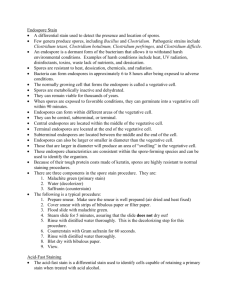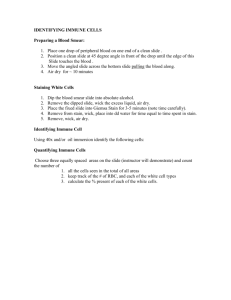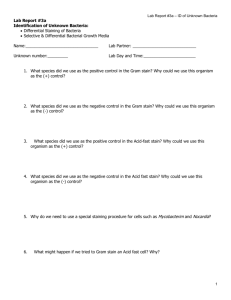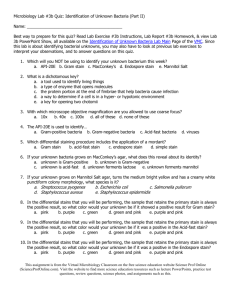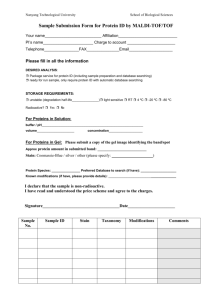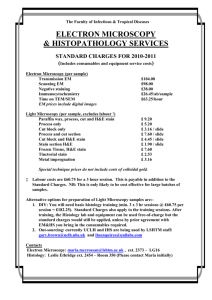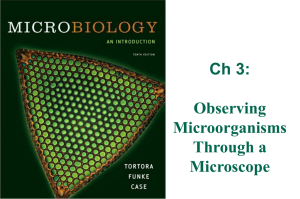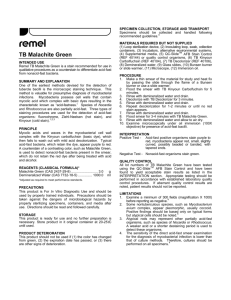Endospore Stain • A differential stain used to detect the presence
advertisement
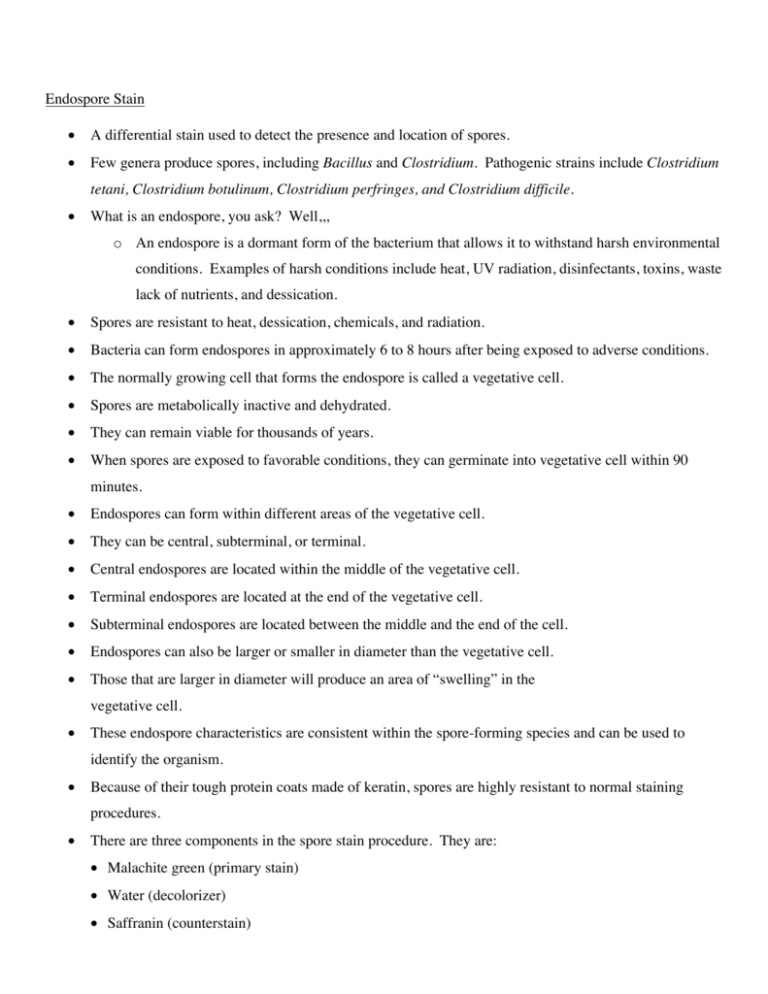
Endospore Stain • A differential stain used to detect the presence and location of spores. • Few genera produce spores, including Bacillus and Clostridium. Pathogenic strains include Clostridium tetani, Clostridium botulinum, Clostridium perfringes, and Clostridium difficile. • What is an endospore, you ask? Well,,, o An endospore is a dormant form of the bacterium that allows it to withstand harsh environmental conditions. Examples of harsh conditions include heat, UV radiation, disinfectants, toxins, waste lack of nutrients, and dessication. • Spores are resistant to heat, dessication, chemicals, and radiation. • Bacteria can form endospores in approximately 6 to 8 hours after being exposed to adverse conditions. • The normally growing cell that forms the endospore is called a vegetative cell. • Spores are metabolically inactive and dehydrated. • They can remain viable for thousands of years. • When spores are exposed to favorable conditions, they can germinate into vegetative cell within 90 minutes. • Endospores can form within different areas of the vegetative cell. • They can be central, subterminal, or terminal. • Central endospores are located within the middle of the vegetative cell. • Terminal endospores are located at the end of the vegetative cell. • Subterminal endospores are located between the middle and the end of the cell. • Endospores can also be larger or smaller in diameter than the vegetative cell. • Those that are larger in diameter will produce an area of “swelling” in the vegetative cell. • These endospore characteristics are consistent within the spore-forming species and can be used to identify the organism. • Because of their tough protein coats made of keratin, spores are highly resistant to normal staining procedures. • There are three components in the spore stain procedure. They are: • Malachite green (primary stain) • Water (decolorizer) • Saffranin (counterstain) Acid-Fast Staining • The acid-fast stain is a differential stain used to identify cells capable of retaining a primary stain when treated with acid alcohol. • Very useful for identifying bacteria in the genus Mycobacterium, some of which are pathogens (i.e. Mycobacterium leprae, Mycobacterium tuberculosis). • Also useful for identifying other organisms which could be pathogenic such as members of the Nocardia genus and parasites in the genus Cryptosporidium and the genus Isospora. • Few organisms are acid-fast, so this stain is run only when there is suspicion of an infection by an acidfast organism. • Acid-fast positive cells contain mycolic acids in their cell wall. • Mycolic acid is a waxy substance which does not allow the cells to be stained by simple stains, but when stained by carbolfuchsin can retain this stain even acid alcohol decolorizer is used. • There are two methods: 1. Ziehl-Neelsen (ZN), which uses heat to drive the carbolfuchsin in the cells. 2. Kinyoun (K), which uses a more concentrated, more lipid soluble form of carbolfuchsin. • There are three components in the acid-fast procedure. They are: 1. Carbolfuchsin= A primary stain that is a phenolic compound that is lipid soluble. Stains cells reddish purple. 2. Acid-alcohol= A decolorizer that decolorizes non acid-fast cells. 3. Methylene blue= A secondary stain that stains non acid-fast cells blue. Capsule Stain • There are two common ways that the capsule stain is performed • It can be prepared as a negative stain or a background stain. • As mentioned before, the stain is designed to stain everything but the organism (the background). • The polysaccharide or polypeptide composition of the capsules may make staining difficult. • The smear is prepared in the same manner as the negative stain, and the slide is not heat-fixed, since application of heat may destroy or distort the capsule. • The negative stain is air-dried before a basic stain is applied, which in many cases is crystal violet. • The slide is then carefully rinsed and blotted, then viewed. • In another technique, two loopfuls of organism are spread as a thin film on a slide and allowed to air dry. • The smear is flooded with crystal violet for 2 minutes then washed off with 20% copper sulfate. • The copper sulfate is not allowed to go down the sink! • The slide is then blotted and viewed.
